I came across this interview online today and it absolutely blew me away. This gentleman is the professor that you will Never, Ever see on CNN, BBC or any other BS mainstream network, because his very detailed explanation about the corona virus detonates a nuclear bomb under the official story for "the pandemic".
Let me give you his credentials first as outlined in the transcript of the interview:
Dr. Wittkowski received his PhD in computer science from the University of Stuttgart and his ScD (Habilitation) in Medical Biometry from the Eberhard-Karls-University Tuüingen, both Germany. He worked for 15 years with Klaus Dietz, a leading epidemiologist who coined the term “reproduction number”, on the Epidemiology of HIV before heading for 20 years the Department of Biostatistics, Epidemiology, and Research Design at The Rockefeller University, New York. Dr. Wittkowski is currently the CEO of ASDERA LLC, a company discovering novel treatments for complex diseases from data of genome-wide association studies.
What Dr. Wittkowski also says at the very end of the interview is:
I’m Knut Wittkowski. I was at the Rockefeller University, I have been an epidemiologist for 35 years, and I have been modeling epidemics for 35 years. It’s a pleasure to have the ability to help people to understand, but it’s a struggle to get heard.
Well, Professor Wittkowski, I heard you.
I don't promote anything with the name Rockefeller as they are part of the cabal that is at the root of The New World Order, but Professor Wittkowski very clearly isn't part of that agenda.
His scientific and razor sharp analysis of the data on the Corona Virus is truly mind-blowing and proves without a shadow of a doubt, that the global lockdown and measures like social distancing have actually exacerbated what would have otherwise been a regular flu season.
I don't normally post a lot of text as an introduction to a video, but these statements are of the utmost importance for a proper understanding of what is really going on with this so called "epidemic". These are some excerpts from the transcript:
| [02:33.24] | JOHN: And so, what do you make of the policy that was enacted in the United States and England and most places throughout the world, this policy of containment, shelter-in-place, etc.? What’s your opinion of it? |
| [02:47.05] | WITTKOWSKI: Well, what people are trying to do is flatten the curve. I don’t really know why. But, what happens is if you flatten the curve, you also prolong, to widen it, and it takes more time. And I don’t see a good reason for a respiratory disease to stay in the population longer than necessary. |
| [03:06.17] | JOHN: And what do you say to people who just say, “We just didn’t know about the lethality of this virus and it was the smartest thing to do, to do what we did, and contain everybody, because we just didn’t have the data.” |
| [03:23.16] | WITTKOWSKI: We had two other SARS viruses before. Or, coronaviruses. It’s not the first coronavirus that comes out, and it won’t be the last. And for all respiratory diseases, we have the same type of an epidemic. If you leave it alone, it comes for two weeks, it peaks, and it goes for two weeks and it’s gone. |
| [04:27.09] | LIBBY: Do you believe the Chinese statistics? Do you think they’ve lied to us? Do you believe the stats that have come out of China? |
| [04:36.09] | WITTKOWSKI: The epidemic has ended there, yes. Because otherwise, we would see people emerging—and even in China, it’s today very difficult to keep information under the hood. If there were lots of cases in hospitals, if the hospitals that they built, the temporary hospitals, were still full, we would hear that. This could not be suppressed. |
| [05:03.25] | JOHN: During the press briefing yesterday, Fauci, and the President, and the rest of the people assembled, were saying that, had they not done the containment strategy that they have done, that upwards of 2 million people would have died in the United States. What do you think of that figure? |
| [05:22.27] | WITTKOWSKI: Well, I’m not paid by the government, so I’m entitled to actually do science. If the government, if there had been no intervention, the epidemic would have been over, like every other respiratory disease epidemic. |
| [08:16.20] | LIBBY: So, what accounts, then, for the fact that the hospitals are suddenly more overrun than they have been in a previous flu season, and for world leaders and the news media just going crazy? |
| [08:29.26] | WITTKOWSKI: Funding for hospitals has, as everybody knows, not increased recently. So, hospitals had to cut down, and, therefore, they now have to run their emergency plans, which is not terrible. That’s what they have been planning for, for decades, so if they have to put up some tents in Central Park, that’s not the end of the world. The tents are there, they’re maintained very well, and they will be there for a few weeks—three, four, maybe, and then the crisis will be over. This is not a situation nobody has ever thought about. |
| [09:16.07] | JOHN: Do you really think that there’s a major shortage of masks, and things like this? |
| [09:21.13] | WITTKOWSKI: Of what? |
| [09:21.13] | JOHN: Masks and PPE and all this? What do you think about all that? Why should there be a shortage of those things? |
| [09:28.00] | WITTKOWSKI: Because people are getting crazy now and it’s almost like the toilet paper […]. |
| [10:19.14] | JOHN: Right. What do you think about their latest figure that because of, they claim that because of social distancing, that we’ve saved ourselves from the 2 million dead, but that we are probably looking at 150-200,000 dead, though they’ve said that it’s possible that it could be lower, if we are really, really good about social distancing, etc. What do you think about their new estimate of death? |
| [10:52.12] | WITTKOWSKI: Social distancing definitely is good. It prevented the sky from falling down. |
| [11:00.04] | JOHN: Are you being ironic? |
| [11:01.19] | WITTKOWSKI: Of course! I don’t know where these numbers are coming from—they’re totally unrealistic. There are no indications that this flu is fundamentally different from every other flu. We know what happened in China, we know what happened in South Korea, we know what happened, or is happening, in Europe. There are no indications that anything is different from a regular flu. Maybe it’s a bit worse than other flus—could be? |
| [11:32.02] | For a respiratory disease, the flu ends during springtime, that people spend more time outdoors because outdoors, the viruses cannot easily spread. That is a form of containment, spending more time outdoors. |
| [11:55.00] | JOHN: So, we’re now spending more time indoors. We’ve been told to go indoors. Isn’t that—doesn’t that help keep the virus going? |
| [12:03.17] | WITTKOWSKI: It keeps the virus healthy, yeah. |
| [12:08.19] | LIBBY: So we should be told to go outdoors? |
| [12:10.18] | WITTKOWSKI: Yeah. Going outdoors is what stops every respiratory disease. |
| [13:00.14] | JOHN: Now, it’s interesting that you say that, because at Imperial College, you know Neil Ferguson has changed his estimate of the number of dead in England from 500,000 to 20,000 or less, and he says that that is because of social distancing. Now, we also know that the way in which social distancing was implemented in England was not very severe, or extreme, or efficient, so this was after one day of lockdown, he announced that in fact, it would be 20,000 or less. Is there any possibility that that number would have changed that way because of the social distancing? |
| [13:46.14] | WITTKOWSKI: No. Actually, we have data for that. |
| [13:53.23] | I looked into the claim that people make that, in China and South Korea, the social distancing had successfully helped to control the epidemic. I looked at the dates when people actually started social distancing. In China, the epidemic peaked on February 1st to February 5th, in that period. But the schools were not closed until February the 20th—that was 2 weeks later. In South Korea, we have a similar pattern. In Daegu, or however that city is being pronounced, where the Church of Shincheonji had that outbreak. The self-quarantine was ordered only on February the 23rd, but the peak in that city happened; the national distancing was not advised until February the 29th, so that’s a week later, when the national peak happened. So, both in China and in South Korea, social distancing started only long after the number of infections had already started to decline, and therefore had very little impact on the epidemic. That means they had already reached herd immunity or were about to reach herd immunity. They were very close. But by installing the social distancing, they prevented it to actually getting to the final point, and this is why we are still seeing new cases in South Korea, several weeks after the peak. |
| [16:02.18] | JOHN: You said that this is the sort of contagion, because it’s airborne, that you can’t deal with by doing tracing or by social distancing. Explain why that is. |
| [16:16.20] | WITTKOWSKI: One thing is tracing with an airborne disease is even more difficult than tracing with a sexually transmitted disease which is difficult enough, as we know from AIDS. Most people know who they had contact with, sexual contact with, over the last two weeks. As a human being traveling the subway in New York and doing other things in New York that we just have to do in New York, I couldn’t tell you who the two three four hundred thousand people are I came in contact with over the last two weeks. So, contrast [Editor’s note: contact] tracing for a respiratory disease is impossible. |
| [17:02.23] | JOHN: Why doesn’t containment work for an airborne disease? |
| [17:06.07] | WITTKOWSKI: You cannot stop the spread of a respiratory disease within a family, and you cannot stop it from spreading with neighbors, with people who are delivering, who are physicians—anybody. People are social, and even in times of social distancing, they have contacts, and any of those contacts could spread the disease. It will go slowly, and so it will not build up herd immunity, but it will happen. And it will go on forever unless we let it go. |
| [22:43.04] | LIBBY: Speaking of the numbers, I noticed in your paper, you said that in mid-March there was a change in the reporting system. What was that all about? |
| [22:50.18] | WITTKOWSKI: This is not the first time it happens. On March 20th, Germany changed its reporting system and suddenly, a lot of cases that had not been reported before were reported. But this is not a sudden increase in cases. Over all, this had no impact on the dynamic of the German epidemic. It increased until about March 27th or so, and has been stable or declining since. The problem in this disease is that reporting and diagnosing are not separated and recorded differently. In the AIDS epidemic, every case was reported with a day of diagnosis and a day of reporting. For whatever reason, this standard developed during the AIDS epidemic is not being employed here. So, we cannot deconvolute this data. |
| [24:25.22] | In Italy there was a spike on one day, there was a spike on one day in Norway. But we have seen now so many of these spikes, they last for one day and then the numbers go back to where it was before. So, we are not really scared anymore if we see something changing very fast. Nature doesn’t jump. As people have known for a long time. The course of an epidemic is always smooth. There is never a ten-fold increase in number of cases from one day to the other. |
| [25:08.17] | There is nothing to be scared about. This is a flu epidemic like every other flu. Maybe a bit more severe, but nothing that is fundamentally different from the flus that we see in other years. |
| [25:33.23] | JOHN: What do you think accounts for the difference in response this time than say to the Swine Flu in 2009? Why are we suddenly so much more panicked and having shut the world down? What do you think is going on? |
| [25:50.10] | WITTKOWSKI: I think at least one factor is the internet. People are using the internet now much more often, and so news, wrong or false, is spreading the globe within hours, if not minutes. And so, let’s say 50 years ago, we would read in the paper that about a week ago there was an epidemic of flu in the United States or in China or somewhere else, and at that time, it was already over. So, people would say, “Okay, that happens all the time.” Now, what we read is, “Oh! There were 785 cases in the Vatican for two days” Eh, maybe not. And even if it was a reporting error, these stories are circulating the world and contributing to chaos and people being afraid of things they shouldn’t be afraid of. |
| [27:43.23] | JOHN: So, we keep being told now about the second wave that will come in the fall. Now, tell us what your thoughts about the second wave are and how—it seems like from everything you’re saying is that we’ll have a second wave because of social distancing— |
| [28:03.18] | WITTKOWSKI: Yes. |
| [28:04.10] | JOHN: Okay, so, could you say that in a sentence for me? |
| [28:06.21] | WITTKOWSKI: Okay. If we had herd immunity now, there couldn’t be a second wave in autumn. Herd immunity lasts for a couple of years, typically, and that’s why the last SARS epidemic we had in 2003, it lasted 15 years for enough people to become susceptible again so that a new epidemic could spread of a related virus. Because typically, there is something that requires cross-immunity, so if you were exposed to one of the SARS viruses, you are less likely to fall ill with another SARS virus. So, if we had herd immunity, we wouldn’t have a second wave. However, if we are preventing herd immunity from developing, it is almost guaranteed that we have a second wave as soon as either we stop the social distancing or the climate changes with winter coming or something like that. |
| [30:10.16] | JOHN: I see. And so, to summarize, you are saying that’s going to flatten and extend the epidemic and create the second wave that we are being told to fear? |
| [30:21.00] | WITTKOWSKI: Yes. The second wave is a direct consequence of social distancing. |
| [30:28.16] | JOHN: That’s wonderful to hear. |
| [30:29.13] | WITTKOWSKI: We already know that the social distancing cost the US taxpayer 2 trillion dollars, in addition to everything else that it costs, but it also has severe consequences for our social life, and depression is definitely something that we will be researching. I can say for myself, walking through New York City right now is depressing. |
| [31:10.17] | JOHN: So, what do you think? Should we tolerate this? Should we stand for staying sheltered in house arrest till … what is it? April 30th they want? |
| [31:23.02] | LIBBY: April 30th now. |
| [31:24.20] | JOHN: I mean, is that what we ought to do or should we, perhaps, be resisting? |
| [31:31.00] | WITTKOWSKI: We should be resisting, and we should, at least, hold our politicians responsible. We should have a discussion with our politicians. One thing we definitely need to do, and that would be safe and effective, is opening schools. Let the children spread the virus among themselves, which is a necessity to get herd immunity. That was probably one of the most destructive actions the government has done. We should focus on the elderly and separating them from the population where the virus is circulating. We should not prevent the virus from circulating among school children, which is the fastest way to create herd immunity. |
| [32:24.09] | JOHN: And can you explain, just one more time, as clearly as you can, what’s the concept with natural herd immunity? What happens to the virus when it’s gone through the population in the way you’re describing? |
| [32:39.07] | WITTKOWSKI: If 80% of people have had contact with the virus and are therefore immune, and that, typically, that contact is just a form of immunization. So, there is no disease, there’s nothing happening, and still there is immunity. If 80% of people are immune and somebody has a virus and is infectious, it will be very difficult for that infectious person to find somebody who is still susceptible, not immune. And therefore, this person will not infect anybody else and therefore we won’t have the disease spreading. That is herd immunity. |
| [33:29.12] | JOHN: And what happens to the virus? What happens to the virus, at that point? |
| [33:33.23] | WITTKOWSKI: Well, viruses don’t live, technically, but the virus will eventually be destroyed. |
| [35:50.05] | WITTKOWSKI: We don’t die of the virus. We die of pneumonia. So, if we have a virus respiratory disease, the disease—once the body has created antibodies, the immune system has created antibodies, the antibodies, or the immune system is killing all infected cells which destroys much of the mucosa. And bacteria can easily settle on that destroyed mucosa, and then cause pneumonia. And it is the pneumonia that is killing people, if it’s not treated. I had a virus, whatever it was, maybe it was—who knows—about three weeks ago, and my physician gave me the antibiotics I should take if the disease gets better and then gets worse, because that is a sign of pneumonia and then we have to treat the pneumonia. |
| [36:56.06] | JOHN: And pneumonia is what is treated with antibiotics— |
| [36:59.10] | WITTKOWSKI: Pneumonia is what’s treated with antibiotics. Not the virus. |
| [41:02.18] | WITTKOWSKI: I think people in the United States and maybe other countries as well are more docile than they should be. People should talk with their politicians, question them, ask them to explain, because if people don’t stand up to their rights, their rights will be forgotten. I’m Knut Wittkowski. I was at the Rockefeller University, I have been an epidemiologist for 35 years, and I have been modeling epidemics for 35 years. It’s a pleasure to have the ability to help people to understand, but it’s a struggle to get heard. |

























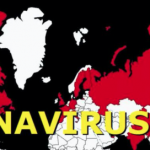



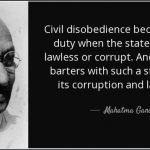













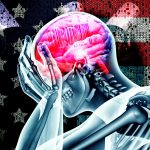




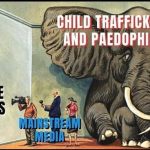





























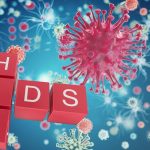








No Comments